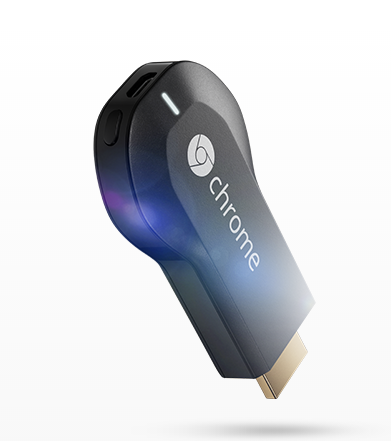Is Google’s Chromecast Streaming Video Dongle Worth Its $35 Price Tag?
 Earlier today, Google announced its new Chromecast device, an HDMI dongle that allows users to wirelessly stream video from a computer or wireless device straight to their TV. For some people it may be a low-cost godsend, for others it might be a redundant waste of money.
Earlier today, Google announced its new Chromecast device, an HDMI dongle that allows users to wirelessly stream video from a computer or wireless device straight to their TV. For some people it may be a low-cost godsend, for others it might be a redundant waste of money.
The Positives
1. We haven’t had the opportunity to try one — the first Chromecasts should be shipping this week and will be in Best Buy by the end of the month — but all the demos claim that it’s incredibly easy to set up. Plug it into an HDMI port, connect it to your wireless network, then go.
2. For users purchasing the device, it comes with 3 months of Netflix service. If you’re not currently a Netflix user, that offer could significantly offset the $35 price tag. UPDATE: Google pulled the plug on this offer after only one day.
3. Google claims that the Chromecast will automatically switch to its HDMI input when you send video through the device. That would mean no more firing up the Xbox, PS3, Roku, or other device and having to manually switch.
4. At $35, Chromecast is less expensive than most streaming video devices.
The Possible Negatives
1. Depending on how many other HDMI devices you have connected to your TV — cable boxes, gaming consoles, computers, etc. — you may not have enough HDMI slots available for another device. Even worse, Engadget notes that while the dongle itself is rather small, the shape and design could make it a tight squeeze on some TVs and some people might need to leave open a second HDMI slot just to make room [UPDATE: Since posting this story, Google has updated the Google Play store description to clarify that an HDMI extender cable is included in the box, which should alleviate any concerns about the odd shape of the Chromecast]. For people with a full slate of connected devices, that would mean you’d have to be swapping out connections to switch between options.
It also requires its own USB-connected power supply, so be prepared to move around the plugs on your already crowded surge protector if your TV doesn’t have an available USB slot to power the Chromecast.
2. Users with Internet-connected TVs — which are becoming increasingly popular — probably already have built-in apps for Netflix and other streaming services like HBO Go.
3. While Chromecast purportedly scales video so that you don’t end up with the usual awkward framing that comes with connecting a computer, tablet, or smartphone to a TV, we wonder how it will perform side-by-side compared to existing apps that are built specifically for smart TVs and gaming consoles.
4. It doesn’t come with the built-in apps or interface that something like a Roku box would, but Google says it will automatically update to work with a growing number of apps. At today’s demo, they only showed a couple of non-Google video apps that work with Chromecast so we have to wonder about popular services like Hulu, HBO Go, and Amazon Instant Video.
The big question you need to ask yourself is whether Chromecast is offering you something you don’t currently have access to. If you’ve already got a smart TV or a current generation gaming console, you probably don’t need to spend another $35 on the device. If you’ve got an older (but still HDMI compatible) TV and you don’t have any existing devices for streaming Netflix and YouTube, you may want to investigate.
Depending on its compatibility with non-Google video sources, some professionals may think the dongle is a good investment as a way of easily connecting to large TV displays for presentations.
It’s certainly a compelling idea, and one that likely heralds a new slate of similar devices from competitors.
Want more consumer news? Visit our parent organization, Consumer Reports, for the latest on scams, recalls, and other consumer issues.

